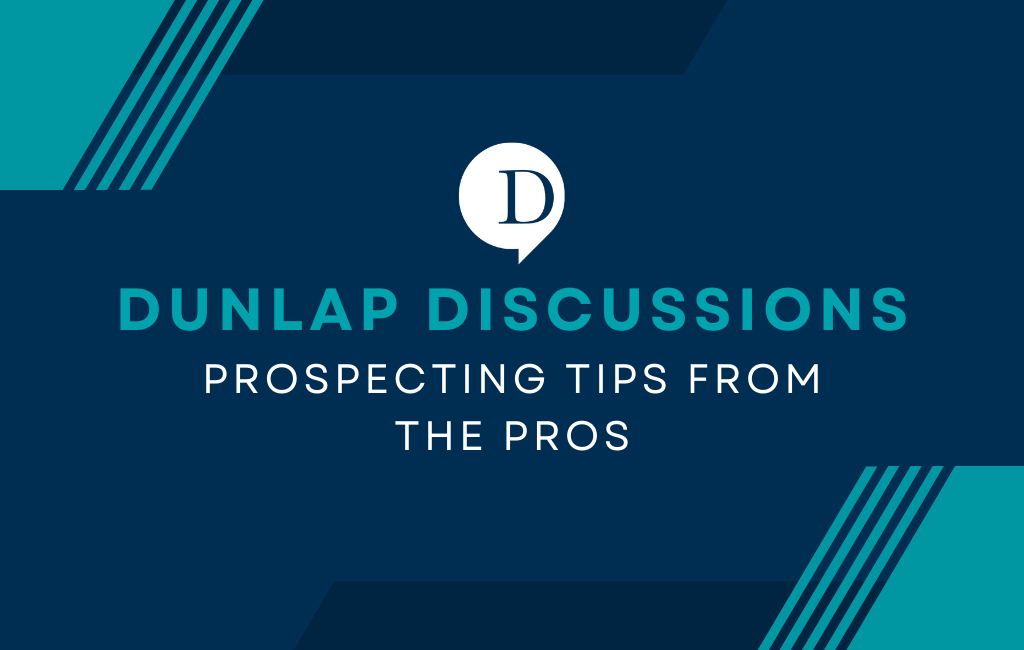Tactful Persistence is the Key to Success
How often should you reach out to a target prospect?
This is a question we are asked a lot when setting up an outbound telemarketing campaign.
The answer depends upon several factors:
- Is this a first-time interest in the conversation with the person or company?
- Is there a known need?
- Is there a known relationship?
- Is the prospective company a high-value target for you?

For Dunlap Marketing, making multiple attempts is an important contributor to our success. Mostly we reach out by making phone calls with the reinforcement of sending one-on-one emails and voicemails. With calling we balance the number of call attempts over a duration of time. Time becomes a good friend. Over time you can call early in the morning, late in the morning, early in the afternoon, and late in the afternoon. Mixing up your call times gives you a better chance of connecting.
The “How To”
Apply good common sense to call frequency. You want to avoid your target prospect feeling that they are your only prospect. You have other prospective companies to develop, so find a balance between spending time with other quality opportunities.
Back to persistence, this is an important trait to have because persistence is often necessary to reach the person you need to speak with. Decision makers are very busy, and guess what, they are not waiting for you to call them. It’s no secret that people are often difficult to speak with. Our belief is you have to earn the opportunity to speak with them, and tactful persistence is often required to earn the opportunity. It is important to trust the fact that just because you are unable to speak with the person, does not suggest they are uninterested. Often, it just simply confirms the fact that they are busy!
To specifically address the question: how often should you reach out to a target prospect – with first time campaigns, where the prospect data file is not huge, it’s common for Dunlap Marketing to start a campaign with the agreement of making 5 call attempts over a 4 to 6 week period of time. As a general rule, our belief is it’s good to penetrate the list by making multiple call attempts if possible. It gives you a more accurate feel of what the quality of opportunities is going to look like.
This represents just the tip of the iceberg based on call frequency. This type of campaign can rest for a month or two, then you can start calling into it again. Unless you spoke to the right person, the likelihood is no one in the company will ever remember you called in prior times. On the other extreme, with campaigns that we have been working on for years, it is very common to see appointments that we set today as having 50 or more call attempts over the past few years.
If a prospect is important to you, do not be afraid to be tactfully persistent with trying to make contact. However, it is very important that you do not over call and always be courteous to everyone you encounter while navigating to the right person. To state the obvious, when you finally do reach the right person, be prepared!
The Exception
When done properly, tactful persistence is almost always a good trait; however, when you have a larger prospect database to develop, it may not be as necessary to practice persistence, as with smaller data files. The larger the file, the more you can play the game of numbers, meaning, there will commonly be a segment of your target prospects that are more likely to answer their phone. The larger the file, the more you can skim the top of the list, connecting with those who are easier to connect with.
You may find that you are successful in filling your pipeline by making 2 or 3 call attempts. Take advantage of this if you can. As you develop the prospect list over time, you will find the level of challenge will start increasing as it relates to connection rates. This is very typical. The offset is you do a better job of saturating the list.
Ultimately…
A byproduct of skillfully working through your target prospect list is you can create multiple silos of categories. You can prioritize your silos by who may have short-term interest, mid-term, long-term, or no interest at all. This is all very good information to know as it helps you determine how to spend your time moving forward.
Part of the value of tactful persistence is it allows you to be creative with keeping your name in front of target prospects and how you integrate other marketing methods to communicate ongoing. This all becomes beautiful marketing and it will generate terrific results for you.
In closing, this article brings to mind two of my favorite sayings, both of which I firmly believe in relating to how we live our lives and how we conduct business:
- “Tactful persistence is the key to success”
- “You never get a second chance at a first impression”
Both sayings significantly play into the intent of this article; work hard, be patient, do not give up, and always respect others.
You can contact Mike Dunlap at miked@dunlapmarketing.com or call him at (281) 496-9870 x140.


